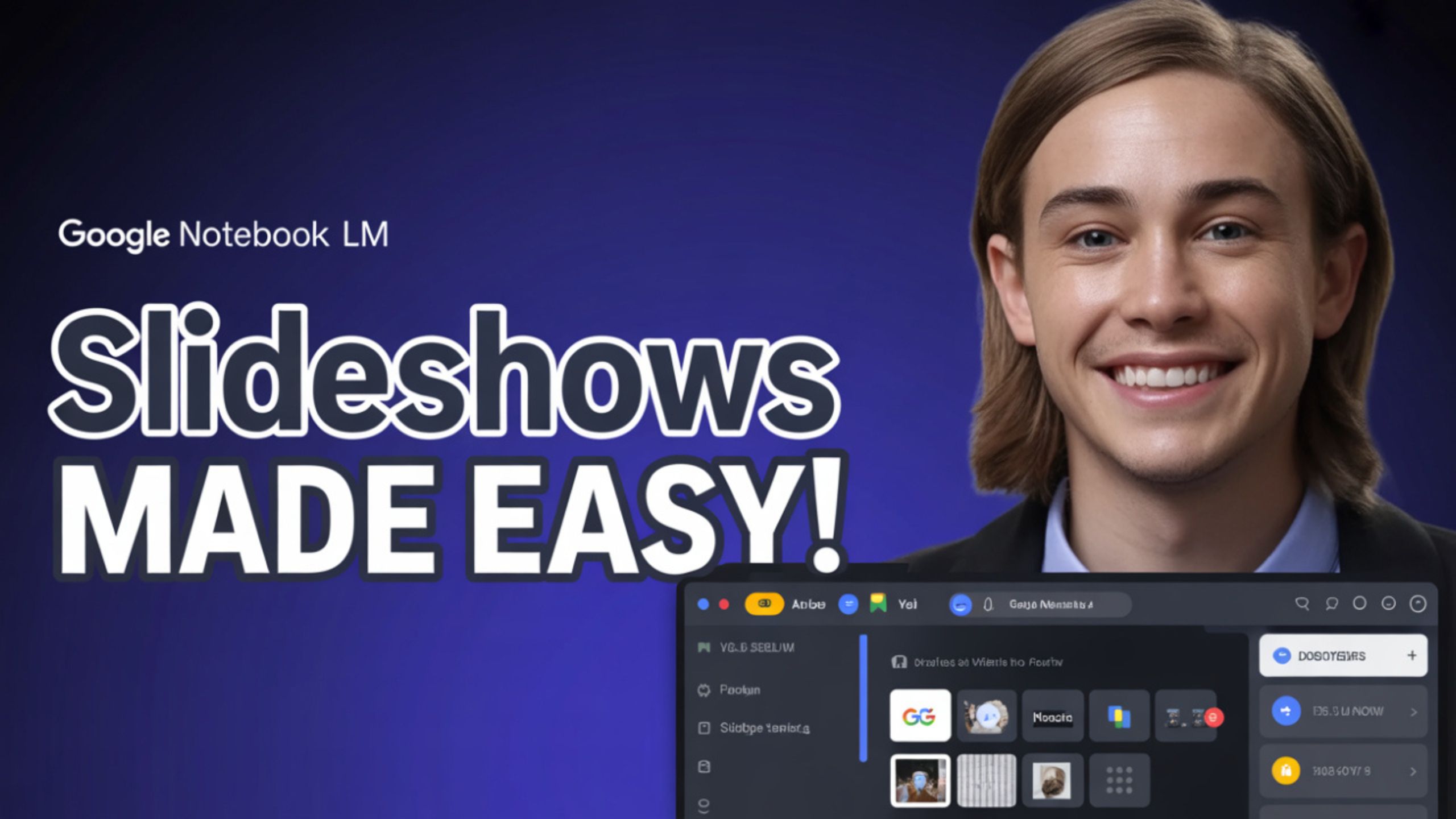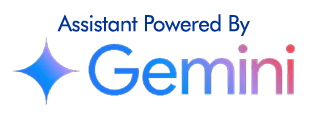Generate slideshows using Google NotebookLM AI– Google continues to push the boundaries of AI-assisted productivity tools, and its latest addition to NotebookLM, the Video Overviews feature, is a leap toward making knowledge more digestible and visually engaging. With this tool, users can now effortlessly create AI-powered slideshows enriched with narration, pulled directly from their content libraries. This update redefines how presentations, explanations, and tutorials are delivered—making it ideal for educators, marketers, analysts, and anyone looking to convert complex content into understandable visuals.
What Is Google’s NotebookLM and How It Works
NotebookLM is Google’s experimental AI research assistant, designed to help users synthesize and interact with large sets of documents and notes. It allows users to upload documents, annotate them, and interact with the content through intelligent AI-generated insights, summaries, and video presentations.
With the latest update, Google integrates multimedia capabilities—most notably the Video Overviews—within the Studio tab. These video overviews transform textual content into slideshows with dynamic visualizations, helpful diagrams, relevant quotes, and automated narration, offering an intuitive learning and communication experience.
Creating Slideshows with Video Overviews: Step-by-Step Guide
Step 1: Access Google NotebookLM
Start by visiting NotebookLM and logging into your Google account. Ensure you can access the latest version where the Video Overview feature is available. The rollout is in progress for English-language users, with more language support expected soon.
Step 2: Upload and Organize Your Documents
Upload your PDFs, Google Docs, or text files directly into a new or existing notebook. NotebookLM scans and indexes your content, making it ready for AI processing. You can highlight key data points or concepts to guide the AI in building your presentation.
Step 3: Navigate to the Studio Tab
Click on the newly redesigned Studio tab. Here, you will see four interactive tiles:
- Audio Overviews
- Video Overviews
- Mind Maps
- Reports
Select Video Overviews to begin your slideshow creation process.
Step 4: Generate the Video Overview
Provide prompts or select highlighted sections for the AI to summarize. NotebookLM’s AI will:
- Analyze the content
- Identify key themes
- Extract quotes, statistics, and diagrams
- Generate a visual narrative sequence
- Overlay AI-generated narration
The resulting slide-based video includes playback controls such as 10-second rewind/forward and adjustable speed, making it ideal for learning and reviews.
Step 5: Customize and Store Multiple Versions
You can now create multiple versions of video or audio overviews for the same notebook. Each version is stored within the same workspace, making it easy to compare formats or target different audiences with varied messaging.
Powerful Use Cases for NotebookLM Video Overviews
Educational Tutorials
Instructors and students can break down dense research papers into concise explainer videos, making learning more interactive and effective. Slideshows with narration are especially useful in distance learning and flipped classroom models.
Business Reports & Presentations
Convert quarterly reports or strategic documents into easy-to-understand executive summaries. Highlighting KPIs, market trends, or financials in a visual format aids quicker decision-making.
Scientific Explanations and Data Interpretation
This feature simplifies the communication of complex methodologies or findings for researchers and data scientists. NotebookLM visualizes abstract processes or multi-step procedures, making technical data accessible.
Marketing & Brand Narratives
Marketers can create product briefings, user personas, and campaign summaries with visual storytelling. Repurpose internal documents into client-ready presentations in minutes.
New Studio Tab: Better Productivity and Workflow
The refreshed Studio tab now provides a streamlined interface to manage and generate different content outputs. The layout includes dedicated spaces for:
- Audio Overviews (summarized spoken content)
- Video Overviews (slideshows with narration and visuals)
- Mind Maps (hierarchical content visualization)
- Reports (structured written summaries)
This restructured workspace enhances organization, accessibility, and content reusability. Users can toggle between formats without leaving their current notebook, reducing friction in the content creation process.
AI-Powered Narration and Visual Intelligence
Google’s AI doesn’t just read and summarize; it interprets tone, detects emphasis, and selects visuals intelligently. The AI host doesn’t use prebuilt templates—it generates custom visuals dynamically from the source materials, including:
- Pull quotes from reports
- Charts from raw data
- Images associated with key topics
- Diagrams illustrating sequences or structures
This ensures every slideshow is unique and contextually accurate, making it a standout alternative to generic presentation software.
Playback Controls for Better User Experience
The user experience is further enhanced with advanced playback options:
- 10-second jump buttons: Move forward or backward quickly
- Playback speed settings: Choose from 1x, 1.5x, 2x speeds
- Visual navigation bar: Skip to specific slides
These controls mirror modern video platforms, ensuring the viewer has complete control over pacing and navigation.
Future of NotebookLM: More Formats Coming Soon
Google has already hinted at additional content formats in the pipeline. These may include:
- Interactive presentations
- Clickable Q&A videos
- Voice-based content exploration
- AI-generated slide decks for live presenting
With constant updates, NotebookLM is poised to become the central hub for AI-driven document interaction, reshaping how we communicate and present ideas.
Wrap Up: Transforming Static Content Into Visual Intelligence
With the integration of Video Overviews, NotebookLM empowers users to transform static text into narrated slideshows, combining AI comprehension, visual design, and automated narration into one seamless tool. Whether you’re explaining a new concept, presenting data insights, or simply sharing knowledge, NotebookLM turns ordinary documents into compelling, shareable videos that speak for themselves.

Selva Ganesh is a Computer Science Engineer, Android Developer, and Tech Enthusiast. As the Chief Editor of this blog, he brings over 10 years of experience in Android development and professional blogging. He has completed multiple courses under the Google News Initiative, enhancing his expertise in digital journalism and content accuracy. Selva also manages Android Infotech, a globally recognized platform known for its practical, solution-focused articles that help users resolve Android-related issues.




AI-powered slideshows are a huge time-saver for everyone.
Google NotebookLM just keeps getting better—loving the features!
Voice narration helps maintain attention throughout presentations.
My students love the new visual style in lessons.
Please add more style options for slideshows soon!
NotebookLM is a creative boost for all content creators.
This makes my job as an educator far easier, thanks!
Can’t wait to try out the new Video Overviews for my lessons!
The narration feature gives my slides a storytelling touch.
Kudos to Google for making info accessible and visual.
NotebookLM is now my go-to for creating tutorial slides.
This helps less tech-savvy colleagues make professional slideshows.
The update is excellent for internal business training.
Ideal for analysts—slides are data-rich and easy to digest.
Can’t believe how quickly I made my last project presentation!
AI-powered slideshows make even complex topics look simple.
The narration feels natural and boosts engagement on my slides.
No more manual slide editing—AI does it all in NotebookLM!
Effortless slideshow creation—love the visual approach.
Google keeps boosting productivity with smart AI tools.
This update is perfect for turning research findings into clear slides.
NotebookLM is redefining tutorials and knowledge sharing for us all.
Slideshows with automated narration? Super cool and efficient.
Amazing feature for marketers needing quick, engaging demos.
Love seeing AI turn my notes into stunning visual stories!
As a teacher, this update saves tons of prep time.
The integration with content libraries makes assembling slides so easy.
NotebookLM’s slideshows help simplify complex topics for my webinars.
Great tool for educators—making lessons more interactive and clear.
I love how narration can be auto-generated for my slideshows now.
The Video Overviews feature in NotebookLM is a total game-changer for presentations!